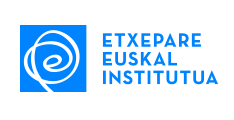Hunter Marrow. An exhibit on the Basque people, “Hidden in Plain Sight: The Basques,” is now available for viewing in the Harano Gallery at Four Rivers Cultural Center.
On Friday evening, members of the local community showed for the gallery exhibit opening, during which free refreshments were served.
The exhibit showcases Basque history and culture through six separate themes and narratives. This is according to Annie Gavica, executive director of The Basque Museum & Cultural Center, in Boise, which is providing the exhibit on a temporary basis until April 2. The exhibit focuses on the story of Basque immigration to the United States, as well as the Basque homeland, including athletes, explorers, politicians, life in a boarding house and today’s Basque Country.
That greater region today lies in the Western Pyrenees and also straddles the borders of France and Spain on the Bay of Biscay.
The Basque people, with their own Basque language, are formally considered an indigenous ethnic group. According to a 2015 National Academy of Sciences study, Basque are related to the pre-Roman Vascones and Aquitanians.
The exhibit includes multimedia, such as audio and visual recordings, as well as historic and contemporary photographs, historical artifacts, artwork and an interactive language component, according to the Four Rivers Cultural Center webpage about the exhibit.
“We thought this exhibit really tells the most,” Gavica said. “I just hope they [patrons] take something away from this, whether Basque or not, to learn more about the culture.”
One of the displays in the gallery is on the Basque population’s history with sheepherding, more relevant to local Basque groups.
Matt Stringer, executive director of the Cultural Center, has had family (father, brother, and uncle) participate in the sheep business.
According to Stringer, the family had 12 bands of sheep at its peak (in which one band of sheep is about 1,000 head). From the launch of the operation in about 1930, in order to help herd such a group, Stringer’s father actively helped Basques immigrate into the United States.
While sheep operations with the Stringer family around the Nyssa area eventually waned in the last 1980s, some of the groups involved stayed in the area.
According to Gavica, the Boise museum was contacted by Stringer and the Cultural Center to put the exhibit on display.
“It’s an expression of respect and I want us all to get to know each other,” Stringer said, referencing other exhibits the Cultural Center has put on display for other Western Treasure Valley ethnic groups.
The difficulty is in the rarity of museum displays for the Basque people.
“They aren’t ones looking for a whole lot of fame and praise,” Gavica said.
She went on to explain that is why the exhibit is so named, as many prominent members of society who contributed greatly to American culture were “Hidden in Plain Sight.”
And that extended beyond the borders of the United States as well.
Maurice Ravel, for example, famous impressionist composer most famously known for his one-movement orchestral piece, Boléro, was actually born March 7, 1875, with Swiss-Basque descent; his father was Swiss and mother was Basque.
Information on the famous composer can be found at the exhibit.



 Enviar a un amigo
Enviar a un amigo Añadir comentario
Añadir comentario








